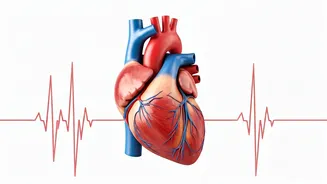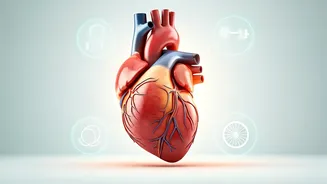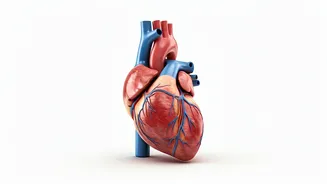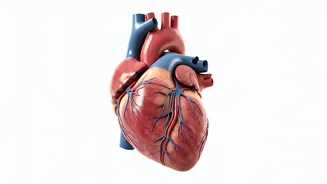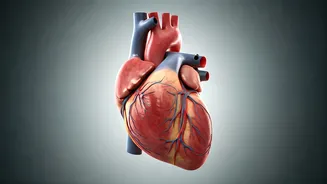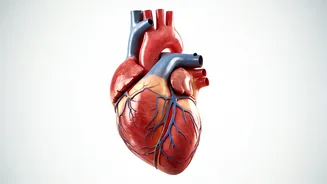Walking: Simple, Effective
Walking is a universally accessible activity, perfect for enhancing cardiovascular health. It's gentle on the joints, making it suitable for people of
all ages and fitness levels. Start with short walks, gradually increasing the duration and intensity. Regular brisk walks elevate your heart rate, improving blood circulation, and reducing the risk of heart disease. Aim for at least 30 minutes of walking most days of the week. Walking also aids in weight management and boosts mood, contributing to overall health and well-being. Consider varying your walking routes to maintain interest and challenge yourself. Walking is not only an exercise, but also a chance to connect with the environment and enjoy the outdoors. Remember to maintain proper posture and wear comfortable shoes to maximize the benefits and prevent injuries.
Swimming: Gentle Cardio
Swimming is an excellent low-impact exercise that is incredibly beneficial for cardiovascular health. It provides a full-body workout without putting excessive strain on your joints. The buoyancy of water supports your weight, making it ideal for those with arthritis or other joint problems. Swimming strengthens your heart and lungs, improves blood circulation, and helps burn calories. It also enhances muscle strength and flexibility. Incorporate swimming into your routine by starting with short sessions and gradually increasing the time and intensity. Different strokes, such as freestyle, backstroke, or breaststroke, can engage various muscle groups, making the workout more diverse. Aim for at least two to three swimming sessions per week to see significant improvements in your cardiovascular health and overall fitness level. Swimming is a refreshing and enjoyable way to maintain a healthy heart.
Cycling: Low-Impact Fun
Cycling is a fantastic way to improve heart health while also being a fun activity. It's low-impact, so it’s easy on your joints. Cycling boosts cardiovascular health and tones muscles in your legs and core. Whether you choose to cycle outdoors or use a stationary bike, it’s a great exercise option. Start with moderate cycling sessions and gradually increase the duration and intensity as your fitness improves. Cycling regularly can help to lower blood pressure, improve cholesterol levels, and reduce the risk of heart disease. It's a versatile exercise that can be tailored to fit your fitness level. Cycling can also be a social activity; join a cycling group or ride with friends. Always remember to wear a helmet and follow traffic rules for safety. Cycling is an enjoyable and sustainable way to maintain a healthy heart.
Yoga: Flexibility & Strength
Yoga is a practice that offers numerous benefits for both your body and your mind, including heart health. It combines physical postures, breathing techniques, and meditation to improve flexibility, strength, and cardiovascular health. Certain yoga poses can enhance circulation and reduce stress, both of which are crucial for a healthy heart. Engaging in yoga can lower blood pressure, reduce inflammation, and improve cholesterol levels. Start with beginner-friendly yoga classes, gradually advancing to more challenging poses. Regularly practicing yoga can reduce anxiety, which can contribute to heart health. Find a style that suits your needs, such as Hatha or Vinyasa. Incorporate yoga into your routine to promote overall well-being and a healthier heart. Remember to consult a doctor before beginning a new exercise regimen if you have pre-existing health conditions. Yoga offers a holistic approach to fitness and a healthy lifestyle.
Tai Chi: Gentle Movement
Tai Chi is a gentle form of exercise originating in China that is designed to improve balance, flexibility, and cardiovascular health. It involves a series of slow, flowing movements, coordinated with deep breathing, making it low-impact and accessible to most people. Regular Tai Chi practice can reduce stress, improve blood pressure, and enhance overall cardiovascular function. It is particularly beneficial for seniors and those with mobility issues. The slow, deliberate movements increase blood flow, strengthen muscles, and improve coordination. Find an experienced instructor to guide you, especially when starting out, to ensure proper form and maximize the benefits. Practice Tai Chi regularly to promote mental calmness, reduce stress, and improve cardiovascular health. This ancient practice is a powerful tool for maintaining a healthy heart and overall wellness.
Dancing: Fun Cardio
Dancing is a fun and engaging way to improve your heart health. It's a form of cardiovascular exercise that can be done at various intensity levels, making it suitable for all fitness levels. Dancing improves heart rate, strengthens muscles, and boosts endurance. Different dance styles, like Zumba or ballroom dancing, offer varied workouts to keep things interesting. Dance regularly to lower your risk of heart disease, improve your mood, and reduce stress levels. Dancing promotes social interaction and is a great way to meet new people. Start with dance classes or follow online tutorials to learn basic steps and gradually increase the intensity. Dancing can enhance your coordination, balance, and flexibility. Make dancing a regular part of your routine to maintain a healthy heart in a joyful and engaging way. Enjoy the music and let yourself move!
Strength Training: Strong Heart
Strength training is vital for overall health and plays a key role in heart health. Incorporating light weights or resistance bands into your routine is highly beneficial. Lifting weights strengthens your muscles and improves cardiovascular function. It helps maintain healthy blood pressure and reduces the risk of heart disease. Start with light weights and proper form, gradually increasing the resistance as you get stronger. Focus on exercises that target all major muscle groups. Include strength training sessions in your routine at least two to three times per week. Strength training improves metabolism, which can aid in weight management and improve cholesterol levels, supporting heart health. Consult a fitness professional or doctor if you’re unsure how to start. Remember to combine strength training with other cardio exercises for the best results. A strong body supports a healthy heart.


